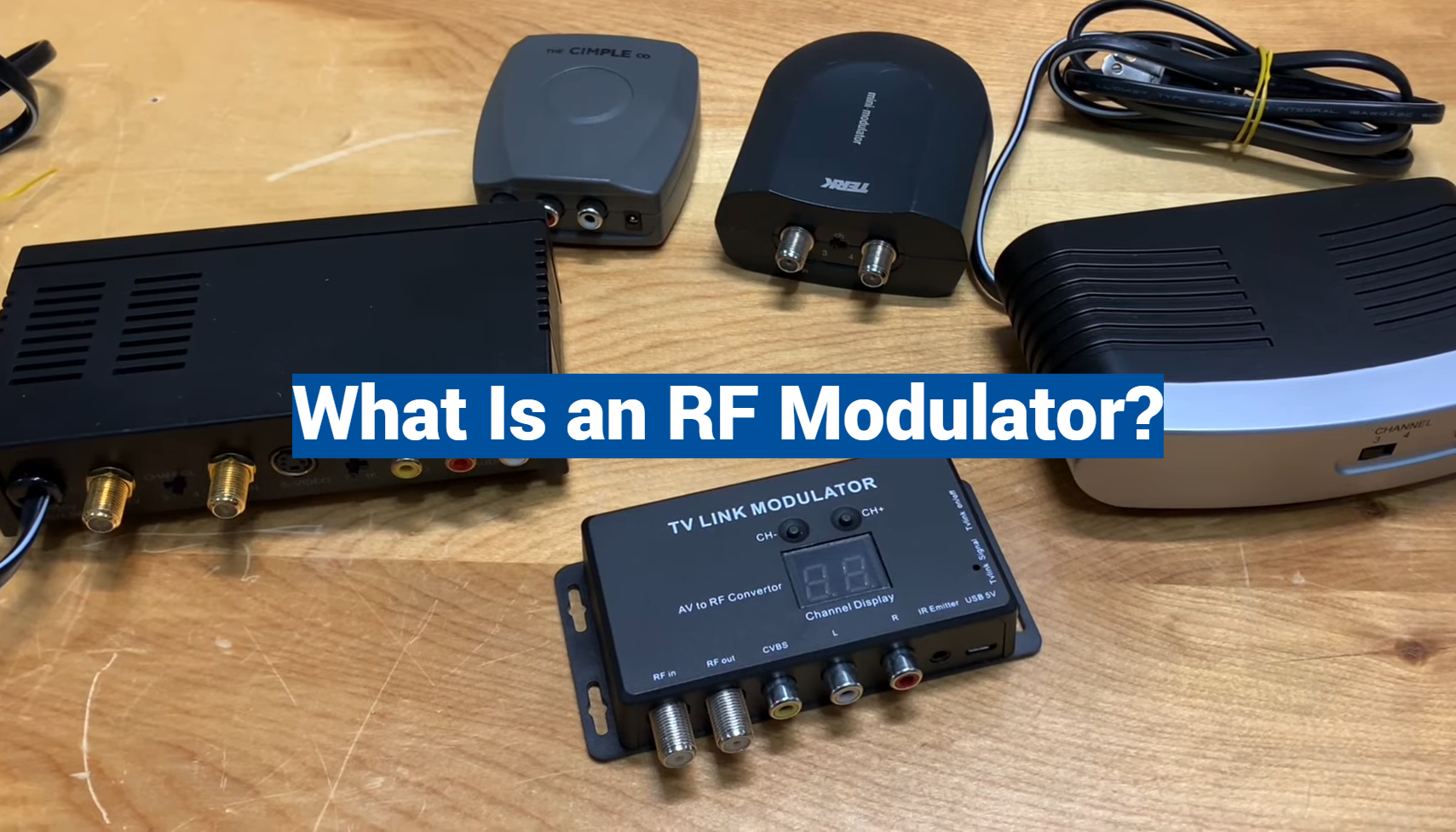Welcome to the fascinating world of RF modulation, where science and technology come together to create a symphony of wireless wonders. If you’ve ever wondered what goes on behind the scenes of your favorite radio stations or how your television magically beams images and sound into your living room, then you’re in the right place. This beginner’s guide will demystify the enigmatic realm of RF modulators and peel back the layers of mystery surrounding this essential technology. By the end, you’ll not only know what an RF modulator is but also understand its importance in the world of communication. So, buckle up and prepare to embark on an illuminating journey through the realm of radio frequency modulation.
What is an RF Modulator?
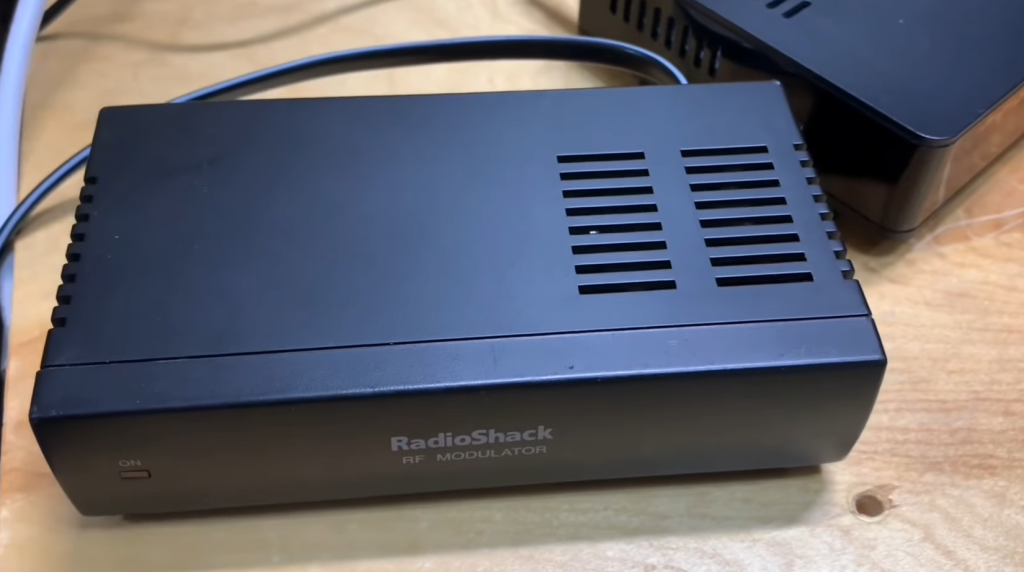
RF modulators are also able to encode and transmit data wirelessly, which makes them ideal for remote control applications. For instance, they can be used to control a television set from a remote location or even stream audio/video content directly from an internet-connected device to a television. Additionally, some RF modulators are capable of transmitting audio and video signals over a long distance, making them perfect for broadcasting applications.
RF modulators come in a variety of different forms, such as standalone devices or as part of a receiver unit. They can also vary greatly depending on the type of signal they are intended to transmit, with some being designed to work with analog signals while others are designed to work with digital signals. Regardless of the form or signal type, RF modulators are an integral part of any home entertainment system.
RF modulators can be a great way to extend the range of your existing television set and provide access to more content than ever before. With their ability to transmit audio/video data wirelessly, they can easily help bridge the gap between traditional and modern entertainment systems, providing a seamless experience for viewers. With the increasing prevalence of digital TV signals, RF modulators are becoming increasingly popular as a means of connecting external devices to television sets. They can be an invaluable tool in any home theater setup.
Additionally, RF modulators can be used in industrial applications such as controlling machinery or monitoring data from various sensors. By encoding data into an RF signal, they can transmit information wirelessly from one location to another, eliminating the need for costly wiring solutions.
RF modulators are essential components in any home entertainment or industrial system and can provide a wealth of benefits when used correctly. With their ability to convert signals and transmit data wirelessly, they can be invaluable tools for connecting devices to a television set or monitoring data from remote locations. As more people become familiar with the capabilities of RF modulators, their popularity is sure to continue growing [1].
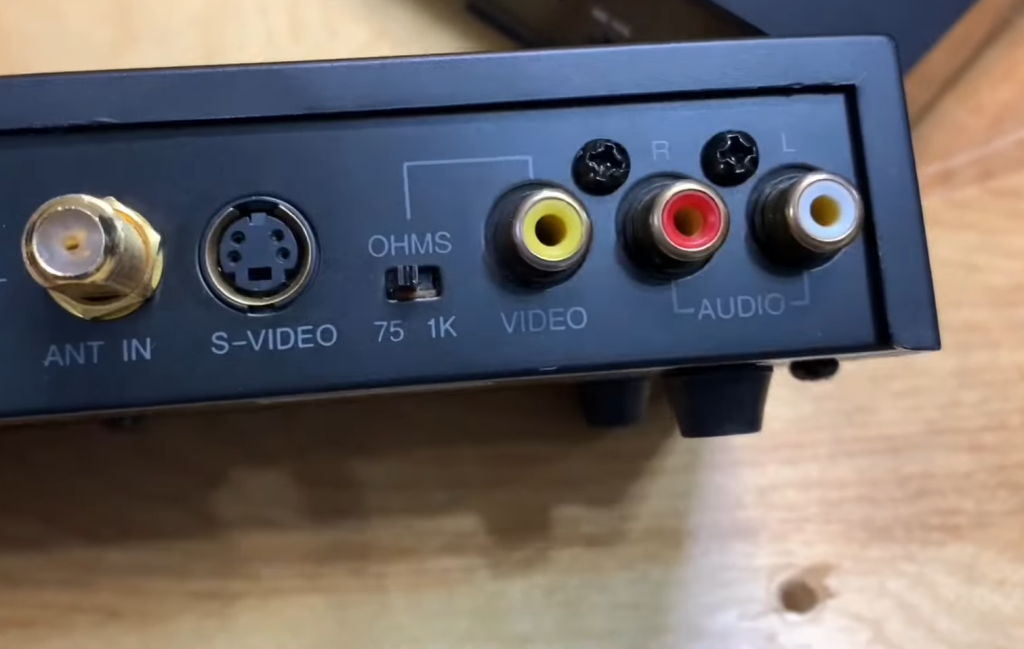
What is RF coaxial cable?
RF coaxial cable, also known as coax cable or simply coax, is an electrical cable consisting of an inner conductor surrounded by a concentric conducting shield. The two conductors are connected through the center conductor and the shield keeps electromagnetic and radio frequency signals from interfering with other signals. The most common type of RF coaxial cable is RG-6, which is commonly used for TV antenna and satellite signal connections.
RF coaxial cable also has a variety of uses in communication systems, such as connecting radio transmitters to their antennas and providing a transmission line for carrying radio frequency signals between points in an antenna system. It can also be used to connect components in electronic circuits, including amplifiers, filters and oscillators.
RF coaxial cables can also be used in computer networks for high-speed data transmission, such as Ethernet and Fibre Channel connections. Coaxial cables come in a variety of sizes and types, with different characteristics to suit various applications. They range from ultra-thin cables designed for low-power signals to thick, shielded cables designed for high-powered signals.
Coaxial cables are used in a variety of applications, including telecommunications, broadcast television systems, computer networks, wired home entertainment systems and automotive electronics. They are also used in consumer electronic devices such as televisions, DVD players and mobile phones. Coaxial cables have been around for more than 100 years and continue to be an essential part of modern communication systems.
Coaxial cables are available in a variety of materials, including copper, aluminum and plastic. The most common type of coaxial cable is the copper-clad steel (CCS) kind, which consists of a center conductor core surrounded by an insulating sheath and then shielded with a metal jacket. CCS coaxial cables are highly conductive and provide excellent shielding from electromagnetic interference. Other types of coaxial cables include RG-58 and RG-59, which are used in video applications; RG-8, which is typically used for broadband internet connections; and RG-213 and LMR, which are designed for high-power transmission systems.
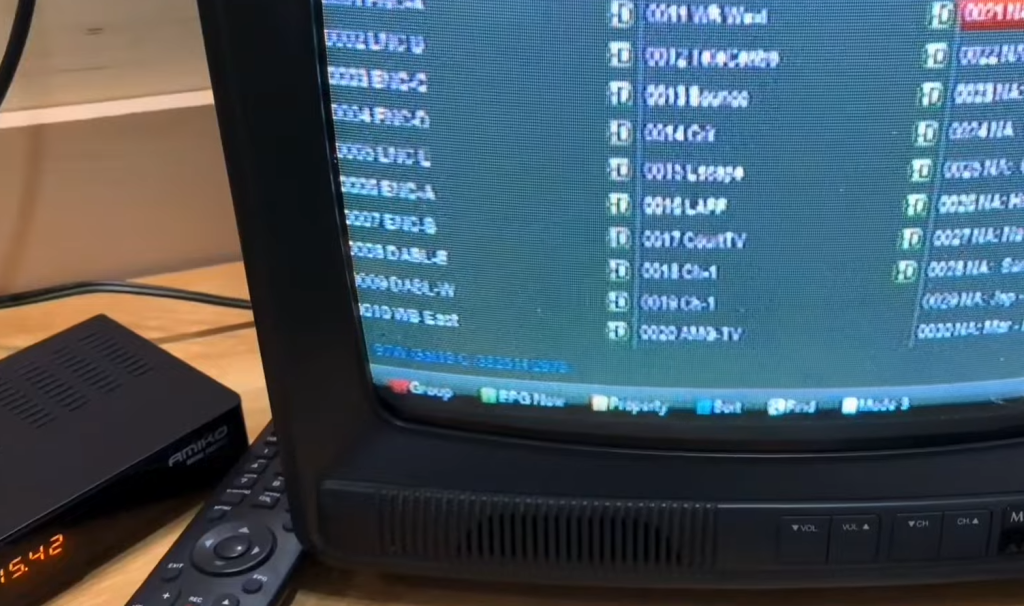
How Do RF Modulators Work?
RF modulators work by taking an input signal such as an audio/video signal from a device like a video game console and converting it to a radio frequency (RF) signal. This RF signal can then be sent over a coaxial cable for transmission through an antenna or satellite dish. The modulator combines the audio and video signals so that they can be transmitted as one signal, which is then received by the receiver and played back on the television set.
The modulator takes the input signal and converts it to a radio frequency signal using an electronic device known as a modulator. This modulator is typically connected to the video/audio source, such as a VCR or DVD player, as well as the coaxial cable that will be used for transmission. The modulator then takes the audio and video signals and combines them into one RF signal which can then be transmitted through the cable.
RF modulators are used in a variety of applications, including broadcast television systems, CATV systems and satellite TV systems. They can also be used to connect video game consoles, DVD players and other video devices to a television set. RF modulators are typically inexpensive, easy to use and provide excellent signal quality when compared with other types of signal transmission.
RF modulators are an important part of many communication and entertainment systems, allowing for the transmission of audio and video signals over long distances. They can also be used to connect devices that do not have a direct connection, such as wireless devices or computers with no built-in video capabilities. With the increasing popularity of wireless technology, RF modulators are becoming even more important for a variety of applications [2].
RF Modulator Buyer’s Guide
Quality of Video Output
This is a key factor to consider when choosing an RF modulator. Many of the devices available today produce low-quality video output, and the resulting image can be blurry or distorted when viewed on a larger TV screen. To ensure you receive the best possible picture quality, look for models with advanced video processing technology that will help to optimize your viewing experience. Additionally, some RF modulators include an onboard HDMI port to allow for digital video input from devices like Blu-ray players and gaming consoles.
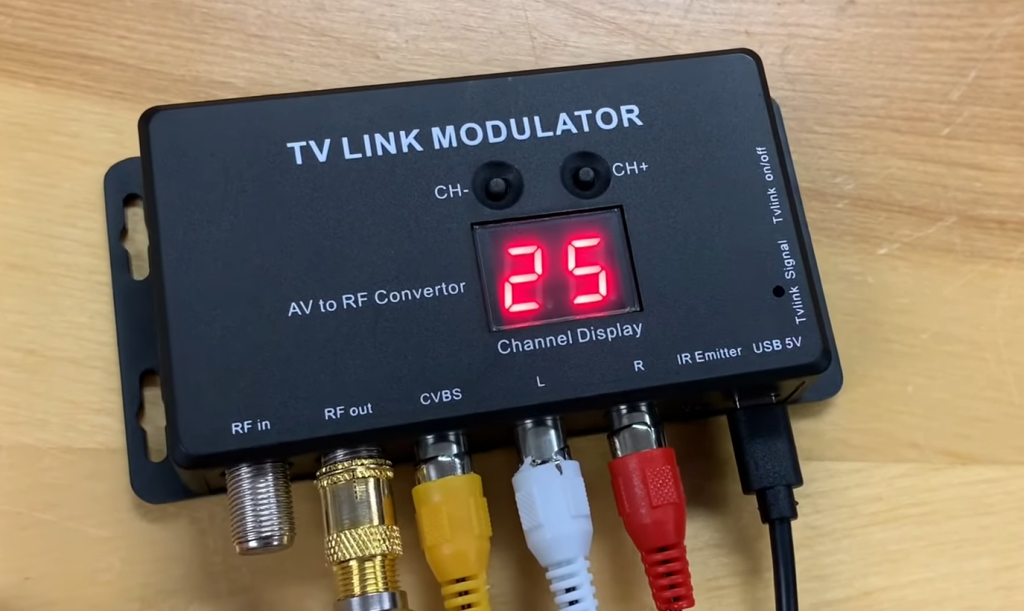
Accessories Included
Most RF modulator packages come with a wide range of accessories and adapters to facilitate seamless device connections. These often include power cords, remotes for convenient control, antenna cables for optimal signal reception, and audio/video cables for enhanced audiovisual experience. Before finalizing your purchase decision, it is advisable to carefully inspect the packaging and ensure that all the necessary components are included. Additionally, it may be worth considering whether optional parts like mounting brackets or wall plates are available for separate purchase to further customize your setup. Taking these factors into account can help you make an informed choice and set up your RF modulator with utmost convenience and efficiency.
Number of Channels
RF modulators, commonly used for transmitting audio and video signals, typically offer up to four different channels. However, depending on your specific setup, you may require a unit with more than four channels to ensure optimal performance. Luckily, many models come equipped with additional channels that can be easily programmed by the user. This added flexibility allows for more efficient distribution of signals throughout your home network, catering to your specific needs and preferences. By leveraging these extra channels, you can take full advantage of the capabilities offered by RF modulators and enjoy seamless audio and video transmission within your network.
Connectivity Options
When evaluating an RF modulator, it’s crucial to consider the type of connectivity it offers. While most models come equipped with coaxial and composite RCA ports for device connection, some go the extra mile by providing HDMI and USB ports for easier hookup. Moreover, it’s essential to ensure that the unit supports the appropriate wireless technologies like Bluetooth or Wi-Fi. This ensures seamless performance and enables effective communication between your devices. By considering these additional details, you can make an informed decision when choosing an RF modulator that suits your needs perfectly.
Price Range
RF modulators vary greatly in price depending on the features and capabilities they offer. Basic models can be found for less than $50, while more advanced units may cost up to several hundred dollars. Be sure to consider how much you’re willing to spend before making a final decision. Also, keep in mind that some models may require the purchase of additional accessories, so make sure to factor this into your overall budget [3].
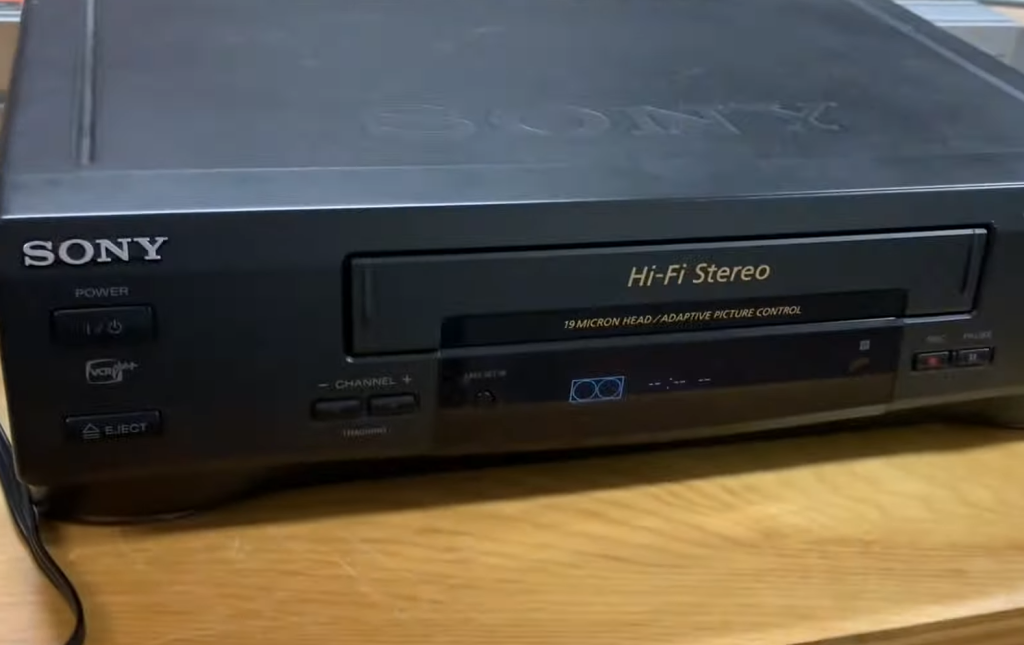
Application and Installation of RF Modulators
RF modulators are devices that convert digital signals to analog ones for use in radio frequency (RF) communication systems such as television sets, radios, and wireless networks. They provide a bridge between the two types of signals so that they can be used interchangeably. To use an RF modulator properly, it must be installed correctly.
The first step in installing an RF modulator is to connect the output of the device to whatever it will be providing a signal for. This can be done using either an RCA cable or a coaxial cable, depending on what type of signal needs to be sent and what type of connection is available.
Once the connections have been made, the next step is to power up the RF modulator. This is done by plugging it into an electrical outlet or using the appropriate type of battery if one is required. After powering up, you can then adjust the settings on the device to ensure that it is providing the correct signal strength and quality for the desired output.
Once all of these steps have been completed, you should be able to use the RF modulator with whatever device you have connected it to. To ensure that everything is working correctly, it is important to perform regular tests and maintenance on the device. This includes checking for any signs of interference or other issues that could be affecting the quality of the signal being sent. Additionally, if any changes are made to the setup or environment, these should also be checked to ensure that the device is still functioning optimally.
Finally, be sure to store the RF modulator in a safe location when it is not being used. This will help to avoid damage or interference from nearby sources of radio frequency signals. Additionally, regular cleaning and maintenance should be done on the device to keep it working properly for as long as possible. By following these simple steps, you can get the most out of your RF modulator and ensure that it continues to provide a reliable signal for years to come.
Maintenance Tips for RF Modulators
To keep an RF modulator functioning optimally, it is important to perform regular maintenance on the device. This includes cleaning any dust or dirt off the device, as well as checking for any signs of damage or wear. Additionally, if the device has been moved to a new location, it is important to check if any additional interference could be affecting the signal quality.

By performing regular maintenance on an RF modulator, you can ensure that it continues to provide reliable signal strength and quality for any device that is connected to it. This will help to make sure that all of the digital signals are converted correctly into analog ones, resulting in an optimal viewing or listening experience. Additionally, regular maintenance can help to avoid any unexpected problems that could potentially arise from improper usage or installation of the device.
Overall, RF modulators are incredibly useful devices for providing a bridge between digital and analog signals. However, they must be installed and maintained properly to ensure that they continue to work optimally. By following the proper steps when installing an RF modulator and performing regular maintenance on the device, you can get the most out of your RF modulator for years to come.
FAQ
What does the RF modulator do?
The RF modulator, also known as a radio frequency modulator, is a vital device used in multimedia setups. Its primary function is to convert audio and video signals into radio frequency signals, allowing seamless connections between devices like TVs, DVD players, and video game consoles. This device becomes particularly useful when you need to connect these devices to an antenna or cable outlet that only recognizes RF signals.
The modulator works by taking the audio and video signals from the source device and encoding them onto an available TV channel. Once encoded, it transmits the signal to a receiver, such as a television, which can then tune into that specific channel to access the content. This process ensures that the audio and video signals are transmitted and received effectively, enabling an immersive multimedia experience.
Overall, the RF modulator plays a crucial role in bridging the gap between different devices and facilitating seamless signal transmission. Its ability to convert audio and video signals into RF signals ensures compatibility and allows for a more versatile setup, enhancing the overall connectivity and functionality of multimedia systems.
Where can I buy an RF modulator?
RF modulators are available from a variety of online and retail stores, including electronics retailers, online marketplaces, and even some grocery stores. Additionally, many electronics manufacturers offer models directly from their own websites. It is important to consider the features offered by different models before purchasing to ensure that the modulator is compatible with your multimedia setup.
When selecting an RF modulator, it is also important to consider any applicable warranties or service plans. Many models come with a one-year warranty, which can help protect your investment should anything go wrong. Additionally, some retailers offer extended service plans for additional protection and peace of mind. Once you have chosen the right model for your needs, simply connect the appropriate cables and input signals to begin taking advantage of all that the modulator has to offer.
What types of inputs does an RF modulator accept?
RF modulators typically accept several different types of inputs, including S-Video, Composite Video, Component Video, Stereo Audio (Left/Right), and Digital Audio. Depending on the model, some may also accept HDMI input signals. To ensure compatibility with your setup, it is important to check to see which inputs are available prior to purchasing a modulator. Additionally, many models will come with the necessary cables for connecting devices as well as instructions for getting started.
Once you have the right type of modulator for your setup, it is simply a matter of connecting the source device to the input port on the modulator and then connecting the output port to a compatible receiver. Once everything is connected, you will be able to enjoy crystal-clear audio and video signals with ease.
What other applications do RF modulators have?
In addition to being used in multimedia setups, RF modulators are also employed in a variety of other applications. Many security systems rely on these devices to encode and transmit audio and video signals from IP cameras to television monitors for surveillance purposes. Furthermore, radio frequency modulators are also used in broadcast engineering and radio communication systems.
Overall, the versatility of RF modulators makes them an important part of many different types of electronics setups. From home entertainment systems to security monitoring, these devices are essential for seamlessly transmitting audio and video signals between devices to ensure a quality viewing experience.
Is an RF modulator the same as a digital converter?
No, an RF modulator is not the same as a digital converter. While both devices play an important role in transmitting audio and video signals, they have different functions. An RF modulator takes audio and video signals from a source device and encodes them onto a TV channel for transmission to a receiver. On the other hand, a digital converter converts audio and video signals into digital signals for transmission to a receiver.
This distinction is important to understand, as different types of devices require either an RF modulator or a digital converter to function properly. Therefore, it is essential to determine which type of device is most appropriate for your setup before making any purchases. If you are unsure which device you need, consulting with a professional can help you determine the right solution for your needs.
Conclusion Paragraph
So, RF Modulators are incredibly useful and can make a huge difference in your day-to-day life. Whether you need to watch television or stream content from your computer, these devices do the job quickly and efficiently. RF Modulators also allow for better sound quality than their analog counterparts, providing an overall improved experience. In addition, they come with low maintenance requirements and are easy to install. For all of these reasons, RF Modulators are the perfect choice for anyone looking to upgrade their equipment.
Useful Video: RF Modulators: Make your own Private Analog TV Channels the Easy Way
References:
- https://thorbroadcast.com/t/rf-modulator
- https://www.utmel.com/blog/categories/rf/rf-modulator-working-principle-and-development-trend
- https://theinfobook.com/best-rf-modulator/

